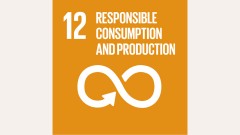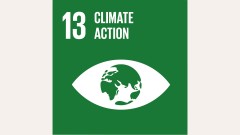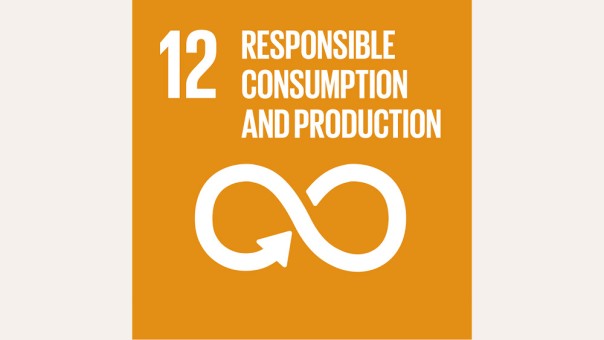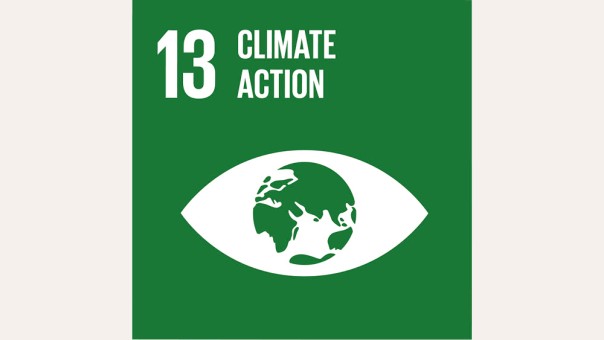Free e-buses? Wind turbines and solar power? District heating and organic vegetables from permaculture soils? In the Lower Saxon municipality of Flecken Steyerberg, this is already part of everyday life.
At first glance, the place looks like any other rural community in the state of Lower Saxony. Dotted around the core village are seven other small settlements made up of red-brick houses nestled between fields, forests and meadows, rye, potatoes and maize – maize above all else. “Flecken Steyerberg”, which is the official name of the community, with its 5,200 inhabitants has committed itself to halving its energy requirements by 2050 and cutting its carbon emissions by 95 per cent compared to 1990.
Heinz-Jürgen Weber, 60, points to the hamlet’s old water mill: “We started using renewables here over 100 years ago, but we sadly took a wrong turn along the way.” Weber was mayor of the municipality for eight years, and climate protection projects were the focus of his activities.
Even today, the mill still makes a small contribution to the fact that almost 100 per cent of Steyerberg’s energy is generated from renewable sources, from biogas, the sun, wind and water. “However, by now this is only true when you look at the general energy balance,” adds Weber, “it’s not true on an hour-by-hour basis.” But by no later than 2035, the municipality in the district of Nienberg aims to be really carbon-neutral – an objective that all fractions of the municipal council agree upon.
In the past, sources of oil and natural gas have brought income and a high standard of infrastructure to the village. Thanks to high local business taxes, the hamlet of Steyerberg has afforded itself (and continues to afford itself) two outdoor pools, an equestrian centre, six sports grounds and three sports halls, even if the area lost almost 80 per cent of its business tax income when natural gas was no longer processed.
But its dependence on fossil fuels is a thing of the past. Today the municipality aims to reduce the creation and consumption of carbon dioxide.
On behalf of the Federal Ministry for Housing, Urban Development and Building, KfW is promoting the transformation process with grants totalling around 140,000 euros, which the municipality is using to finance the development of a neighbourhood concept and a rehabilitation management process that will run until 2021. “And although the programme is titled ‘Energy-efficient Urban Rehabilitation’, we are also expressly catering to rural municipalities,” explains Kay Pöhler from Product Management at KfW. In addition, the municipality receives a KfW loan for the construction of a new childcare facility which covers 83% of the construction cost. The energy-efficient building shall be opened in summer 2022.

Public charging station
The electricity at the charging station at the town hall is free of charge for everyone.
The community’s ecological transformation is in full swing. Staff at the town hall are able to access an electric car. Using a nine-seater electric bus, volunteers run a transport service for OAPs, and local groups can use the vehicle free-of-charge. There is a charging station at the town hall that is free to use. The 29-kilometre-long district heating grid is all but finished apart from the last few kilometres. Houses are due to start receiving hot water from the grid by the end of the year.
The special thing about this project? Anyone who signs up to receive district heating will receive a free fibre broadband connection. An impressive forty-two per cent of households have already opted for this service. With this, “we are reducing each and every person’s carbon footprint by one tonne of CO2 every year,” calculates Weber.

The hamlet of Steyerberg
At first glance, the place looks like any rural community in Lower Saxony.
The hamlet of Steyerberg is working with a wide range of partners for its sustainable projects. For instance, there is the chemical company that produces primary products for the plastics industry and supplies exhaust heat for the district heating network. And then there is the Lebensgarten (Life Garden), which describes itself as an “ecologically and spiritually minded community”.
People from all over the world have been living in this community since the mid-1980s; the settlement was originally built during the National-Socialist era for employees from the local munitions factory. And who knows? Perhaps many of the people who once believed the Life Garden to be a collection of “nutcases” now marvel at the environmentalists’ foresightedness. They installed Lower Saxony’s first charging station for electric cars back in 1991 and used it to charge their own creation, the Grüner Frosch (the Green Frog). And they also installed solar panels on the roof that still produce power to this day.

The garden of life
Since the mid-1980s, people from all over the world have been living and working here in an "ecologically and spiritually oriented community" in a residential settlement.
As a member of the Supportive Agriculture (“Solidarische Landwirtschaft”) network, the Weber family receive a box of organic vegetables from Life Garden every week, grown according to the principles of permaculture. On the whole, Weber believes that “you have to be a role model. I can’t expect others to do things that I am not prepared to do myself.” And the Weber household’s contribution to climate action? Thermal solar collectors and photovoltaic panels on the roof of their farm, which has been refurbished for improved energy efficiency, water-using stoves, a heat pump and two electric cars. And soon there will be a battery storage system and perhaps even a small wind turbine.

Master plan municipality
The town of Steyerberg in Lower Saxony has set itself the goal of reducing its energy requirements by half by the year 2050 and cutting its CO2 emissions by 95 percent compared to 1990 levels.
Its efforts in sustainable management have already garnered the hamlet a few awards (and grant funds). For instance, it has been named as one of the 41 master plan municipalities promoted by the Federal Ministry for the Environment, Nature Conservation, Nuclear Safety and Consumer Protection as climate action role models.
Together with the neighbouring community of Liebenau, the hamlet of Steyerberg has recently applied to become a HyExpert region of the National Hydrogen and Fuel Cell Technology Innovation Programme (NIP) . Eickhofer Heide, the area that once housed the munitions factory, is due to be used to produce green hydrogen using power produced by twelve wind turbines. Plans are also in place to produce synthetic fuels using methane from the Steyerberg biogas plant and CO2 from the chemical factory, which already supplies the hamlet’s district heat.
A total of 41 wind turbines are already turning on Steyerberg’s municipality boundaries. One will soon belong to the local authorities. The municipality still has assets of several million euros leftover from the bountiful years. And what should it do with them? Weber suggested joining the wind power aficionados, an idea which was then brought to life. The sustainability effect is remarkable: one single wind turbine covers the energy consumption of all of the community’s private homes.
Published on KfW Stories on 8 October 2021, updated on 9 December 2021
The described project contributes to the following United Nationsʼ Sustainable Development Goals
Goal 12: Ensure sustainable consumption and production patterns
Humanity has long lived beyond its ecological means. This applies in particular to industrial countries and the growing upper and middle classes in many emerging economies. The transition to an economic strategy and way of life that respects the natural limitations of our planet can only be successful if we adjust our consumption habits and production techniques. Internationally valid rules for labour, health and environmental protection are important for this.

All United Nations member states adopted the 2030 Agenda in 2015. At its heart is a list of 17 goals for sustainable development, known as the Sustainable Development Goals (SDGs). Our world should become a place where people are able to live in peace with each other in ways that are ecologically compatible, socially just, and economically effective.











Data protection principles
If you click on one of the following icons, your data will be sent to the corresponding social network.
Privacy information